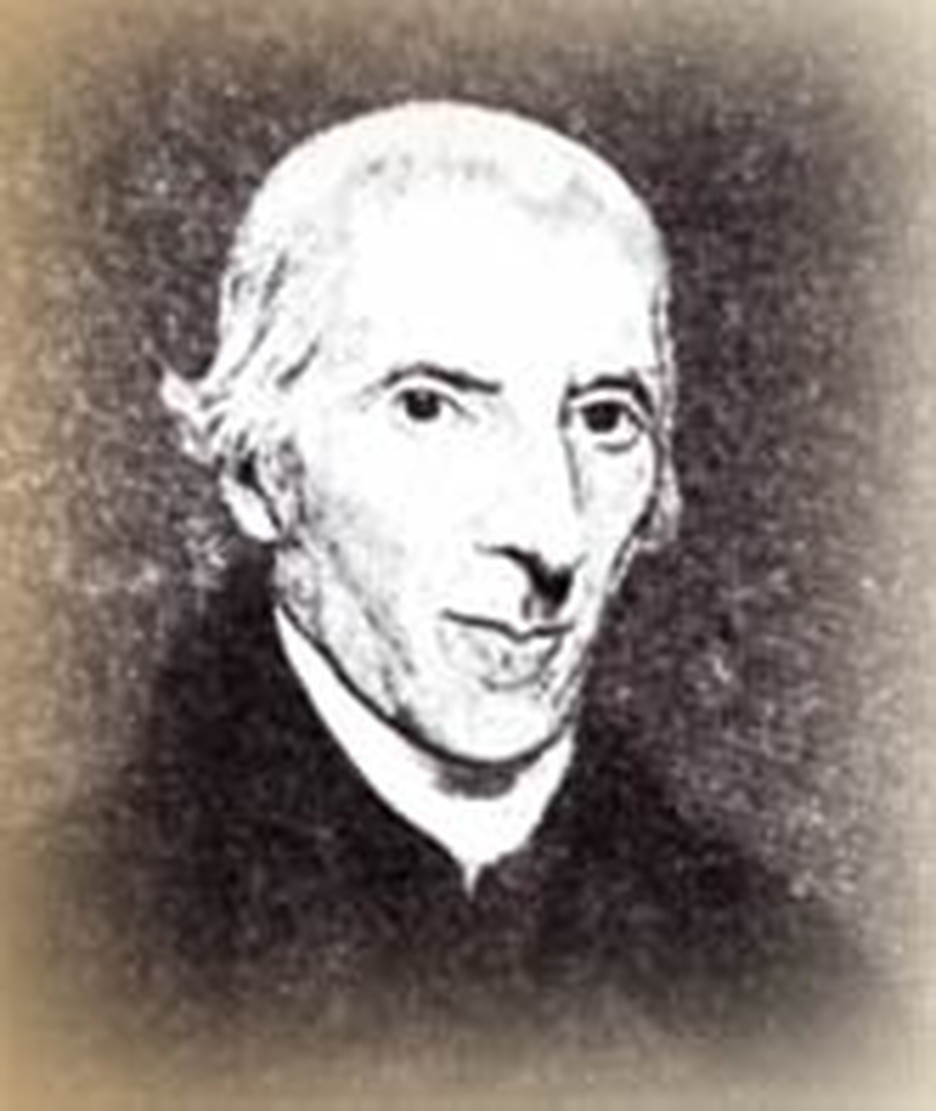
Digital Communications
FAXes, modems, e-mail, the Internet, information superhighway -- the communication revolution continues to change our world and affect relationships around the globe. This modern communication revolution has its beginnings with Samuel Morse and his invention of the telegraph in the 1830's.
An artist by profession, Samuel Morse (1791-1872) was the first son of Congregationalist minister Jedidiah Morse. When Samuel was attending Yale, Gilbert Stuart saw some of his artwork and encouraged Jedidiah to send his son to study art in Europe. During his four years studying in England under Benjamin West, Samuel produced several works exhibited and well received at the Royal Academy.
From Art to Sciences
Back in America, however, there was little demand for classic, epic paintings, and Samuel led a struggling existence as a portrait painter. After the deaths of his young wife and his father and mother in close succession, Samuel went again to Europe to study and paint. On his return voyage in 1832, he was captivated by discussions at dinner about new experiments in electromagnetism. Morse in an amazingly prescient comment remarked, "If the presence of electricity can be made visible in any part of the circuit, I see no reason why intelligence may not be transmitted by electricity." Morse worked on his plan the rest of the voyage. In the face of numerous difficulties and disappointments, he determinedly perfected his invention and, in 1837, applied for a patent on the American Electromagnetic Telegraph. He also created the Morse Code, with letters represented by dots and dashes, to convey the telegraph message.
Though he had a patent, Morse was still poor and needed funds to implement his ideas. Unsuccessful in the US, Morse spent four fruitless years in Europe seeking backers for his telegraph project. Faced with constant failure, Morse wrote:
The only gleam of hope, and I cannot underrate it, is from confidence in God. When I look upward it calms any apprehension for the future, and I seem to hear a voice saying: 'If I clothe the lilies of the field, shall I not also clothe you?' Here is my strong confidence, and I will wait patiently for the direction of Providence.
Surprise at Sunrise
In 1843 Morse again approached Congress, but many continued to call his ideas ridiculous. On the last night of the Congressional session, Morse went to bed tired and disgusted. In the morning, however, he was told that a few minutes before midnight Congress had awarded him $30,000 to construct a telegraphic line between Baltimore and Washington. Within a year the line was established, and Morse sent the first telegraph message, from Numbers 23:23 in the Bible, "What hath God wrought!" Morse later wrote that no words could have been selected more expressive of the disposition of my own mind at that time, to ascribe all the honor to Him it truly belongs.
Soon governments, railway lines, newspapers, businesses, and missions agencies began to rely on the telegraph for communications. Morse's invention had revolutionized and changed forever the realm of communications. After years of struggle and poverty, Samuel Morse enjoyed wealth and success. Whether in poverty or wealth, he maintained the strong Christian faith learned from his parents. Four years before his death he wrote:
FATHER OF AMERICAN GEOGRAPHYThe nearer I approach to the end of my pilgrimage, the clearer is the evidence of the divine origin of the Bible, the grandeur and sublimity of God's remedy for fallen man are more appreciated, and the future is illumined with hope and joy.
Textbooks in schools, Christianity and politics, liberalism in the pulpit, soundness of church doctrine, the nature of Jesus -- issues facing us today, as they did Jedidiah Morse in the earliest years of the United States.
Just after the American Revolution, when he was a graduate student at Yale, Jedidiah Morse (1761-1826) taught school to earn money. The students needed a good geography text, so Jedidiah wrote one, Geography Made Easy, and published it in 1784. It was the first geography published in the United States and went through over twenty-five editions. Morse later published other American and world geographies, earning the title "Father of American Geography." His geographies often referred to the Scriptures in describing the earth's formation and geographic history.
While at Yale, Jedidiah studied for the ministry. In 1789 he accepted a call to the First Church of Charlestown, Massachusetts, one of the oldest churches in America (John Harvard had once been its pastor). Morse was soon embroiled in controversy. He had come across an edition of Isaac Watts' Divine Songs for Children with all references to Christ's divinity removed, and he immediately began a strong defense of Jesus' divinity. He argued that if such errors in children's books went unchallenged, the opposition would grow bolder and "every sacred truth of the Holy Bible may be in danger." In newspaper articles and letters Morse called attention to how far the Boston clergy had come from the orthodoxy of the Puritan fathers.
Jedidiah was alarmed by the French Revolution and the growing influence of European rationalism in the United States. He believed there was evidence that agents of French infidelity were working against the United States, and he put his hopes in the Federalist party of George Washington and John Adams to help stem the irreligious tide sweeping the country. With Yale President Timothy Dwight he established the New England Palladium as a Federalist newspaper to preserve the "government, morals, religion, and state of Society in New England." With the defeat of the Federalists and the victory of Thomas Jefferson in 1800, Jedidiah concluded that the preservation of the morals of the country would not be by political means.
Morse and many Congregational ministers had prayed for the renewed spiritual vigor which came to the churches in the Second Great Awakening. Morse established and worked through many benevolent societies to spread the religious revival throughout the United States.
Jedidiah Morse's Benevolent Christian Activities
- 1803 - Organized first tract society in America
- 1805 - Began Panoplist, a magazine of Christian biography and missionary news
- 1808 - Helped establish Andover Seminary
- 1814 - Helped found New England Tract Society
- 1816 - Aided establishment of American Bible Society
- 1811-1819 - On Prudential Committee of American Board of Commissioners of Foreign Missions
- Secretary of Society for Propagating Gospel Among Indians and Others in North America
Heresy at Harvard
In all his many activities, Jedidiah remained a staunch defender of the orthodox faith of his fathers and a combatant of the growing liberal and Unitarian theologies. As a member of Harvard's board of overseers, in 1805 Jedidiah led the opposition to the appointment of Unitarian Henry Ware as Hollis Professor of Divinity. Morse believed such an appointment would lessen the purity of the church, lower the standard of Christian morality, and evaporate the very power of the Christian faith. Morse lost the battle for Harvard, and the Unitarians gained control of the University. Morse and his supporters went on to establish Andover Seminary as a place where orthodox ministers could be trained. In his writings and public addresses Morse continually spoke against Unitarianism and attacked its weakening of Biblical authority and overvaluing the human capacity for spiritual development apart from the saving grace of Jesus Christ.
When Jedidiah lay dying in 1826, his oldest son Samuel was at his bedside and asked his dad if he had any doubts about the doctrine he had preached. Jedidiah replied, "Oh No! They are the doctrine of the Bible. The Savior, whose honor you have protected, will not now desert you. Oh No! he gives me a foretaste of heaven."
LOSING FREEDOM'S BLESSINGS
In his election sermon given at Charleston, Massachusetts on April 25, 1799, Jedidiah Morse warned his listeners:
To the kindly influence of Christianity we owe that degree of civil freedom, and political and social happiness which mankind now enjoys. In proportion as the genuine effects of Christianity are diminished in any nation, either through unbelief, or the corruption of its doctrines, or the neglect of its institutions; in the same proportion will the people of that nation recede from the blessings of genuine freedom, and approximate the miseries of complete despotism. All efforts to destroy the foundations of our holy religion, ultimately tend to the subversion also of our political freedom and happiness. Whenever the pillars of Christianity shall be overthrown, our present republican forms of government, and all the blessings with flow from them, must fall with them.
Play It Again, Sam
Samuel Morse's mother often reminded him of the catechism's teaching that "the chief end of man is to glorify God and enjoy Him forever," and throughout his eighty-one years Samuel tried to honor God in all that he did. He kept a childlike Christian faith, trusting in the goodness of God and the truth of the Bible. Samuel was constantly concerned about moral character, both his own and that of his country at large. He believed Christians should be more concerned about their thoughts and actions, for if the thoughts were pure, the actions would follow. He believed the proverb that "evil communications corrupt good manners." We can only wonder how the "Father of American Telecommunications" would react if he could see the content of telecommunications media today-- both the ennobling and the debasing.
- Was founder and first president of the National Academy of Design
- Recognized today as one of America's great portrait artists (best known are two portraits of Marquis de Lafayette)
- In 1831 was appointed first chair of fine arts in America, the Professor of Sculpture and Painting at New York University
- In 1817, with his brother Sidney, patented a workable, flexible piston-pump for fire engines. Also patented a marble-cutting machine.
- Along with Lyman Beecher and other Protestants of the day, believed that Catholic immigration posed a threat to the United States and wrote pamphlets and articles against the papal religion's influence in America.
- Introduced the daguerreotype to the US and made the first photographic portrait in the US


